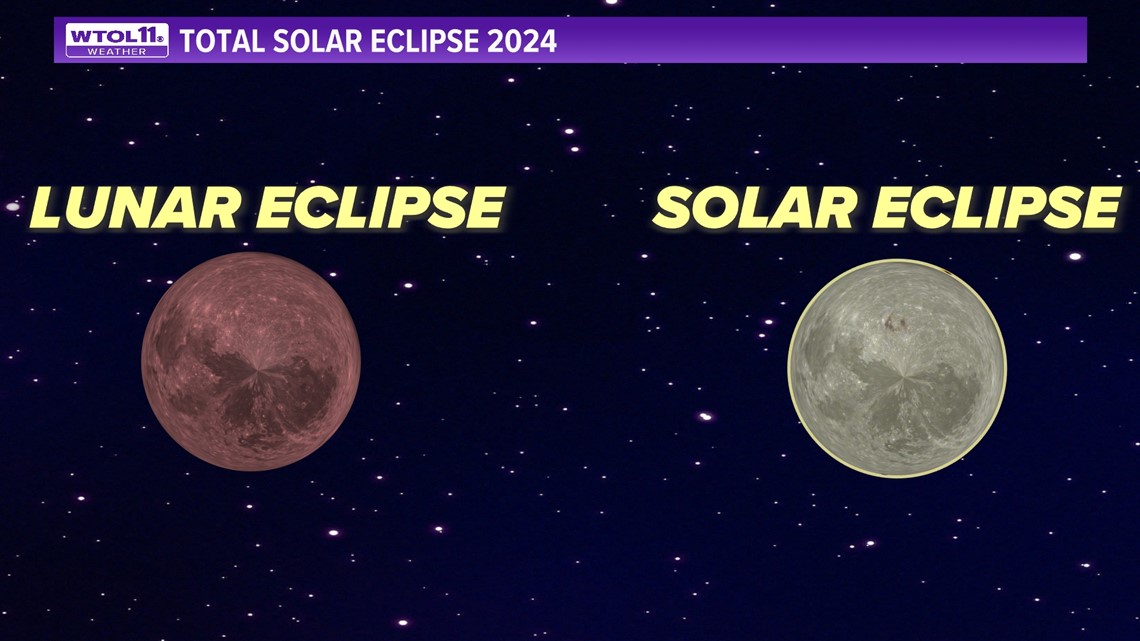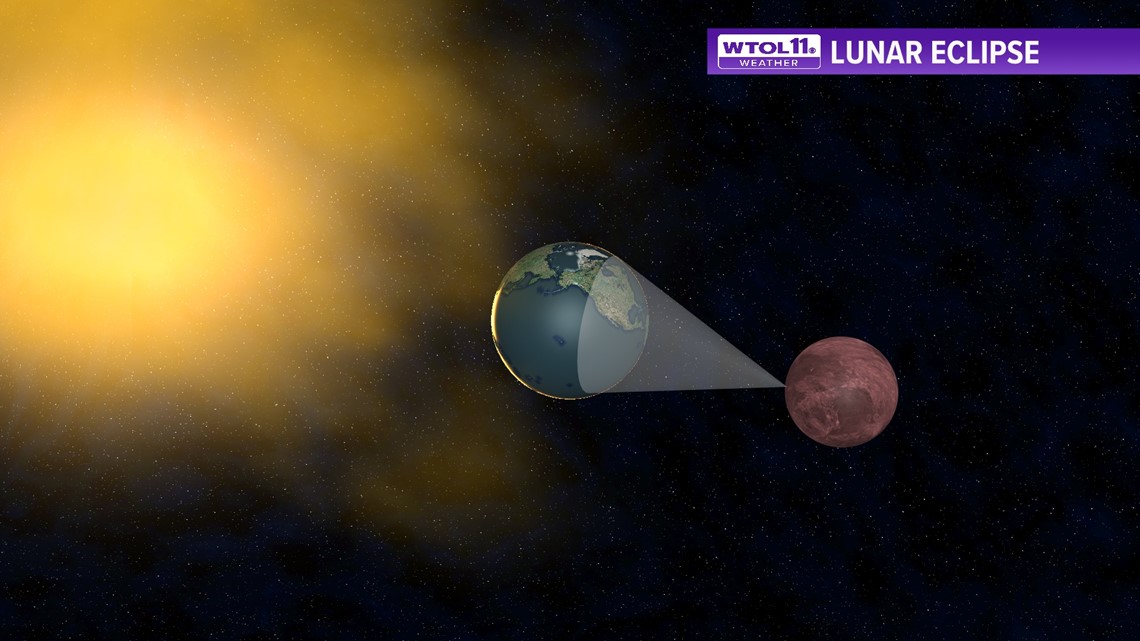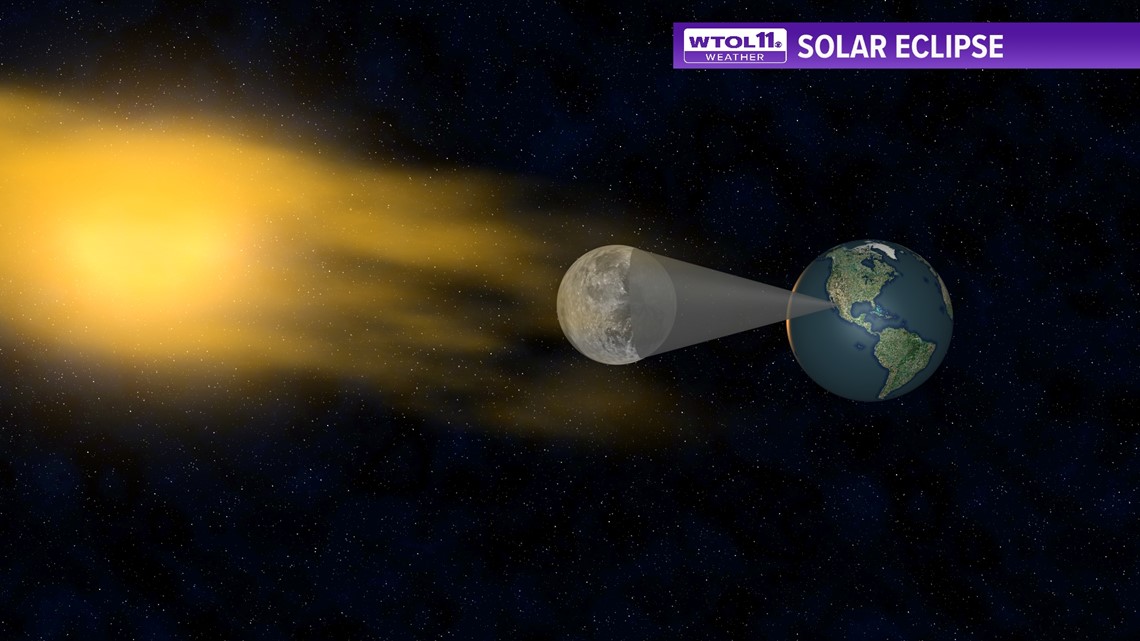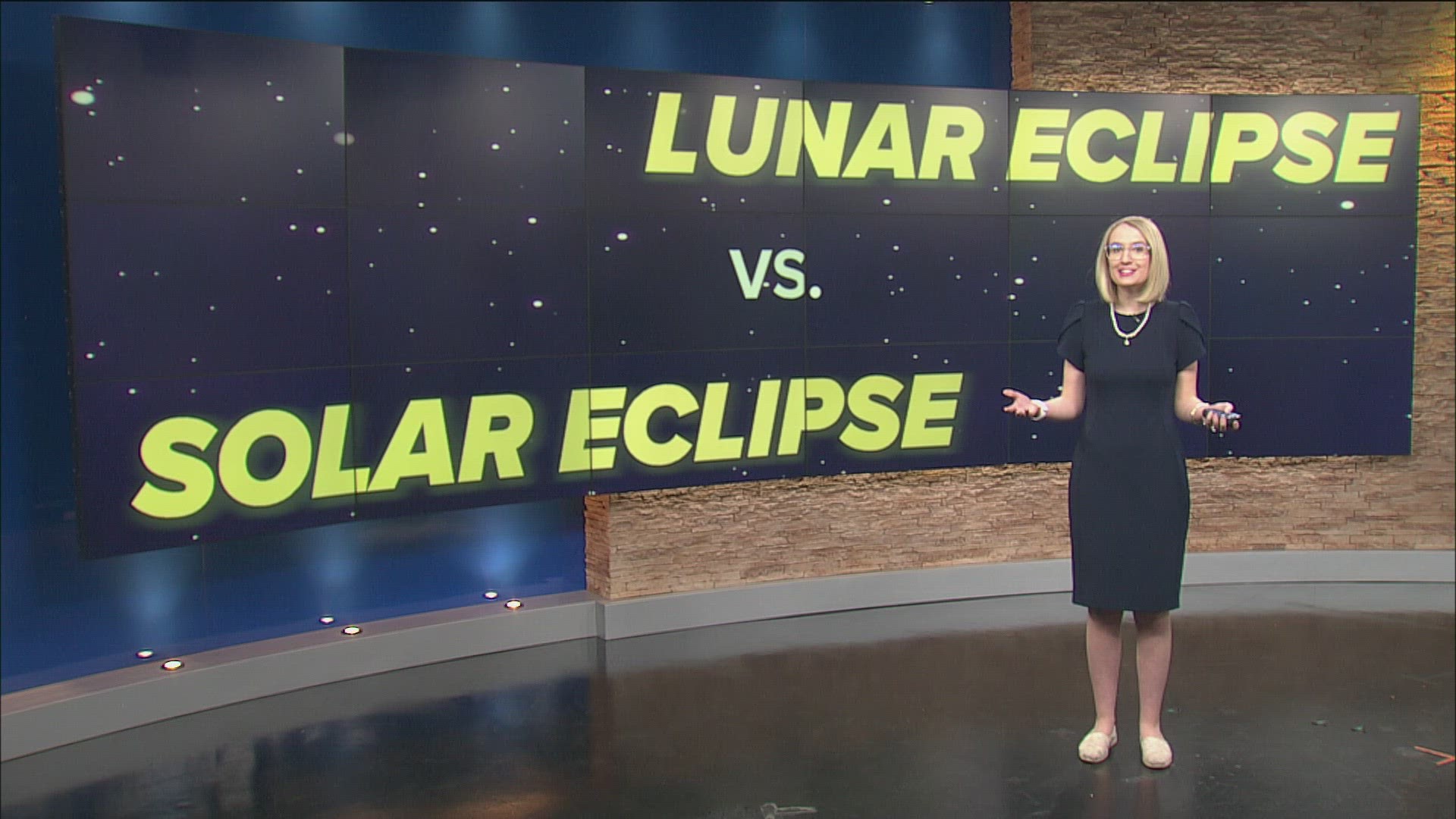TOLEDO, Ohio — Keeping your eyes on the sky, both day and night, can provide a lot of useful information, whether to gauge the weather, or to view celestial bodies out of this world.
For an astronomical event you won't want to miss, save the date for April 8, during which residents in 13 U.S. states - Ohio included - will have the opportunity to bear witness to a total solar eclipse.
For a full explanation on how a total solar eclipse occurs, check out an explanation from the WTOL 11 Weather team here.
Due to the Earth's tilted revolution around the sun and the moon orbiting Earth, multiple factors must align for any eclipse to take place. With the three bodies moving through space, eclipses are not frequent by nature.
The Earth's tilted axis is another variable in play: if the Earth did not sit on a tilt, an eclipse would be possible monthly. Instead, the numerous factors mean the stars (or in this case, the sun, moon and Earth) must align for any eclipse to take place.


There are two kinds of possible eclipses: lunar and solar, whose nomenclature references the moon and sun, respectively.
A lunar eclipse occurs when the Earth is positioned between the sun and moon. It can only occur during a the full phase of the moon.
During a lunar eclipse, Earth casts a shadow on the moon, just like a human casting a shadow on a sidewalk on a sunny day. The Earth's shadow will dim the lighting of the moon, which is illuminated by the sun during other normal circumstances.
Since the wavelength of light traveling from the sun to the moon is long, the longer wavelength can give the moon a reddish appearance. A lunar eclipse will also last a few hours.


A solar eclipse is different from a lunar eclipse because the moon is positioned between the sun and the Earth. This can only occur during the new moon phase.
The light shining towards earth will be blocked by the moon causing a shadow along a path on the earth. The moon can block our view of the sun temporarily.
Due to the moon's movement in space, solar eclipse do not last very long. A solar eclipse will last a few minutes in a location before moving on. Though the eclipse is short in time, the fast movement of the earth and moon allows for approximately one third of planet earth to experience the event during a given solar eclipse.
During a total solar eclipse, the path of totality (where the moon completely blocks the sun's light) will bring darkness in its path for a few minutes.


For more information on the Total Solar Eclipse happening on April 8, 2024, visit our library here.
MORE 2024 SOLAR ECLIPSE COVERAGE FROM WTOL 11
MORE FROM THE WTOL 11 WEATHER TEAM

